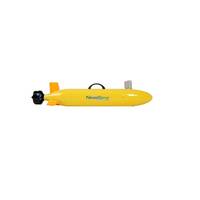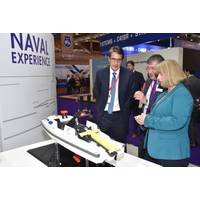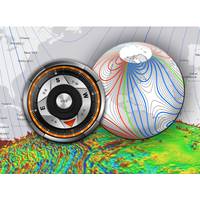
RTSYS Debuts Micro-AUV NemoSens
French acoustics specialist RTSYS has launched its latest versatile micro autonomous underwater vehicle (AUV) NemoSens, designed to perform numerous civil applications such as seabed imagery, environmental monitoring or wreckage localization.Unveiled after years of development, the flexible new AUV is small (less than 1 meter long) and is easy to carry and launch (less than 20 pounds including payload). Micro-AUV NemoSens can host any kind of payload, be it a CTD probe, sidescan sonar or any other sensors. Thanks to an open LINUX architecture it can be programmed from a ROS or MOOS interface to

Thales Invests to Advance Autonomy
in South-West England to test and develop autonomous systems for both military and civil activities. "Investing in these facilities enables the safe test, evaluation and training of autonomous platforms, innovative research and development, as well as the regulations for military and civil applications. These facilities will be central to the growth of Thales’s future autonomous capability," said Victor Chavez, CEO of Thales in the UK. Thales will invest $9.3 million across the two regions, and sustain around 60 jobs in the local areas. There are currently 500 jobs both in Thales

World Magnetic Model Updated
Magnetic Model to ensure accurate navigation NOAA officials announced today the World Magnetic Model (WMM), a representation of Earth’s large-scale magnetic field and an indispensable complement to GPS devices used by NATO, the United States and United Kingdom militaries, as well as civil applications ranging from mineral exploration to smartphone apps, has been updated. Changes in the Earth's outer core trigger unpredictable changes in its magnetic field, an invisible force that extends from Earth's interior to where it meets a stream of charged particles emanating from the Sun
USVs and the Future of Subsea Defense
and deployment. However, new threats, cost-benefit calculations, operational experiences in the past decade and new technological developments are driving rapid growth in the market. A USV may be used instead of manned vessels not only for defense but also in Homeland Security (HLS), security, and civil applications such as vessel monitoring, law enforcement (drugs, piracy) and enforcement of fishing and environmental laws. When protecting and securing strategic facilities at sea, USVs can fill all parts of the integral security solution — surveillance and detection, recognition and alerting,


 February 2025
February 2025





